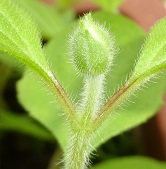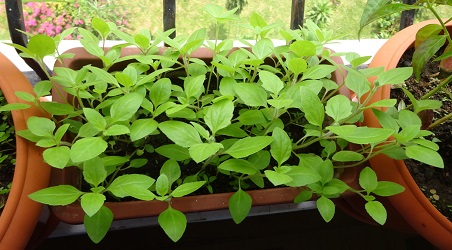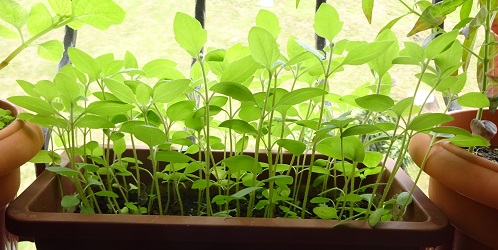| Home | Nature Weekly Index |
20 September 2015 | Coat Button | Tridax procumbens |
 Tridax procumbens, commonly known as Coat Button because of the appearance of
its flower head, is a herb from the daisy family (Asteraceae). It is native to the
tropical Americas but is now a common sight in Singapore and many part of the world, especially in sunny and open areas. It is
considered by some an invasive and pest plant.
Tridax procumbens, commonly known as Coat Button because of the appearance of
its flower head, is a herb from the daisy family (Asteraceae). It is native to the
tropical Americas but is now a common sight in Singapore and many part of the world, especially in sunny and open areas. It is
considered by some an invasive and pest plant.
The individual flower head is held on a slender and long stalk. It consists of tiny, closely packed yellow flowers surrounded by mainly 3-toothed ray florets. The dried fruit (or achene) is spread by wind with the feathery pappus (modified calyx or sepal of the flower) that attached to one end of the fruit.
In August, I brought some feathery seeds back to observe its growth pattern. It did live up its name as an invasive weeds. The germination from the seed was very quick, within a few days. Four weeks later, the seedlings crowded the whole pots and I even found 3 of them having flower buds. Its growth rate is comparable to the fastest growing weed, Eleutheranthera ruderalis (Ogiera), in my pot.


The herb is commonly used in traditional medicine in India as anticoagulant, antifungal and insect repellent. The herb is also believed to be beneficial in bronchial catarrh, diarrhoea, dysentery, wound healing, hair growth. The drive or motivation toward the use of medicinal herbs is anchored on the belief that these herbs are much safer than synthetic medicine or broadly known as western medicine. While this may be largely true, the efficacy part of the herbs is usually hard to prove. Human-used experience on such herbs are usually anecdotal without any formal experimental study in human.
There are extensive publications on this herb related to its potential medicinal properties from the chemical components extracted though almost all of them were either extrapolated from animal or laboratory studies. Majority of the publication were from India with just a handful from Bangladesh and Nigeria. One animal (rat) report published in 2012 showed that the extract from this herb at high dose might cause liver toxicity.
At least 3 articles that reported on the effect of the herb on the clotting of human blood from 45, 30 and 20 volunteers respectively. The ones with 45 volunteers (India, 2014) and 30 volunteers (Philippines, 2012) did showed a positive effect on clotting time in the blood sample treated with the herb extract. The 20 healthy volunteers study (India, 2013) did not achieve any conclusive outcome.
It was mentioned in the DNA of Singapore website that “the leaves are cooked and eaten as a vegetable” but no reference was indicated. Later, I did find a recently published article on this topic.
A similar looking herb with a much smaller flower head is Galinsoga parviflora (Potato Weed). This herb is rarely seen in the wild and the only live specimen that I saw came out from my pot back in 2010. This smaller herb also go by the synonym Tridax parviflora though this name is not available in the Plant List website.